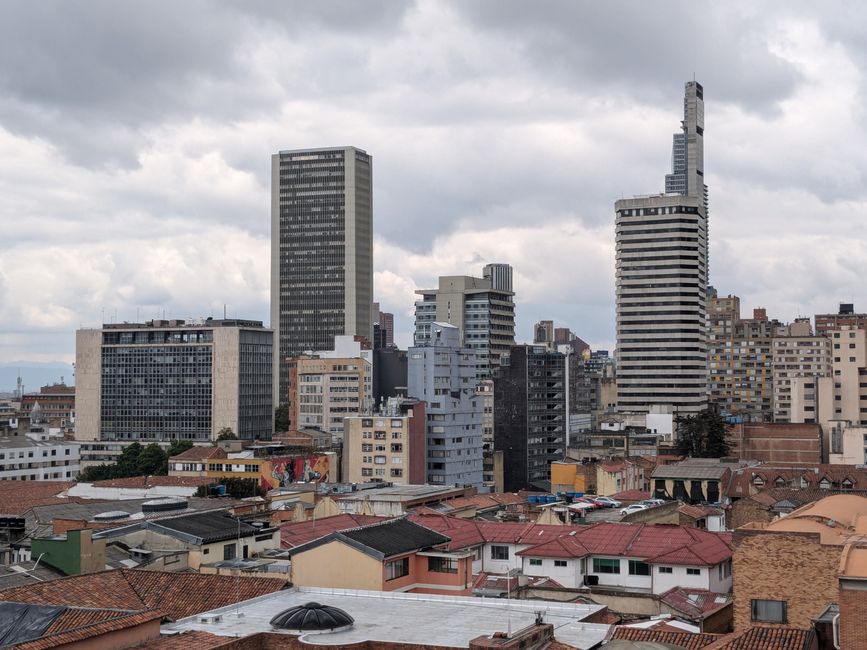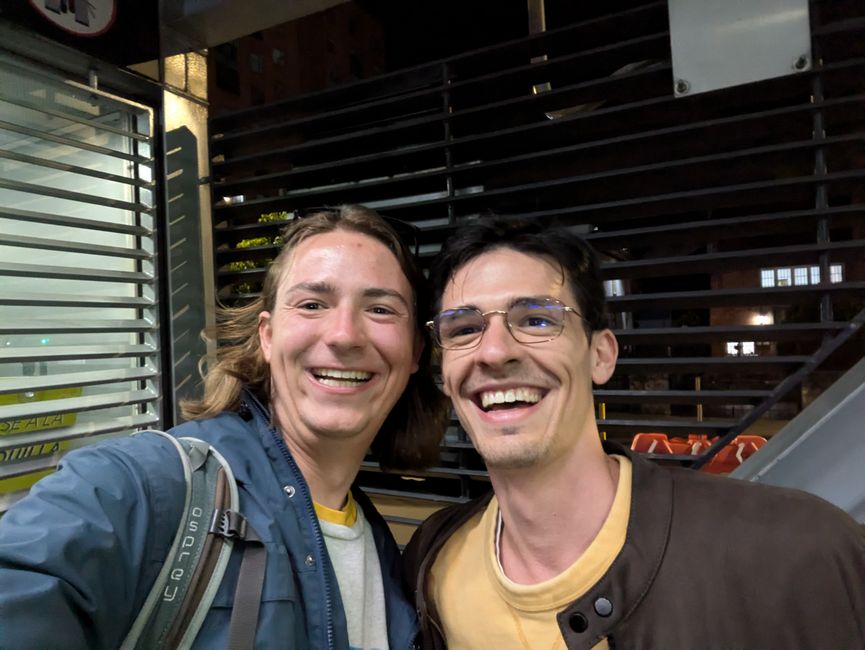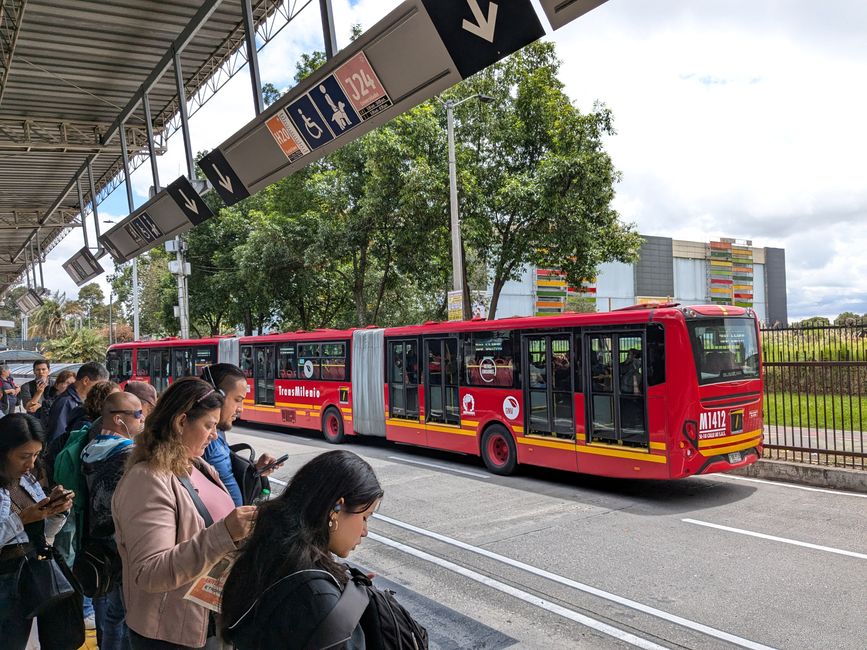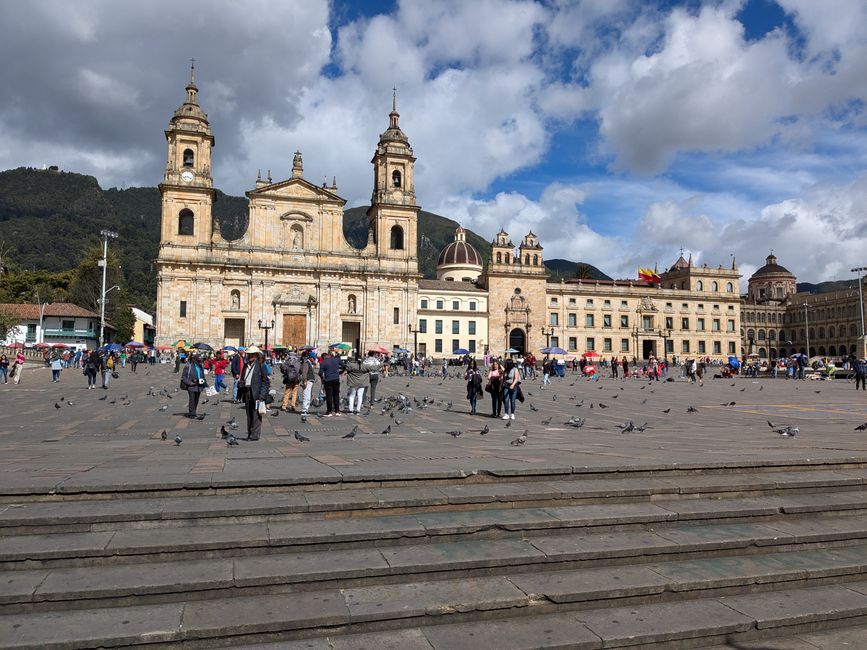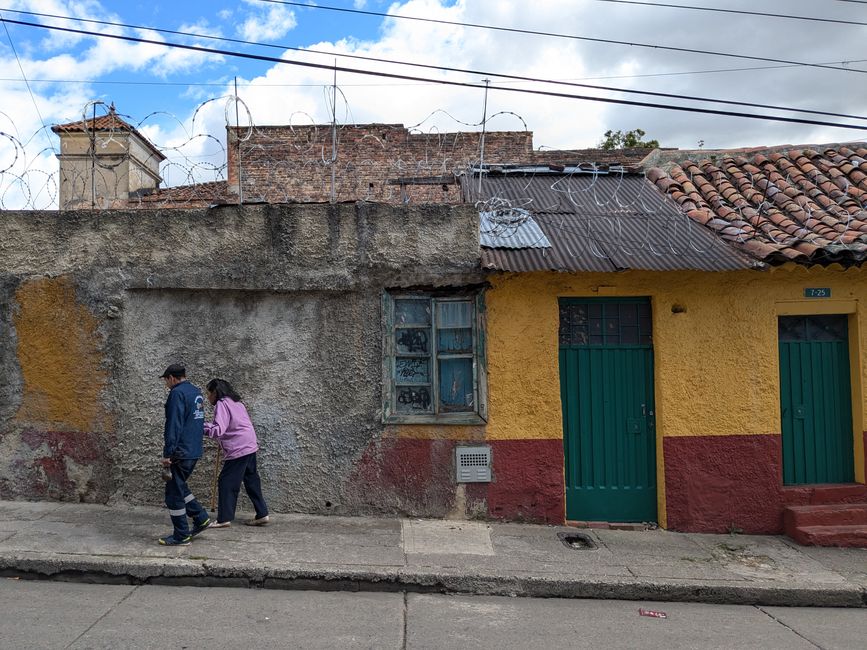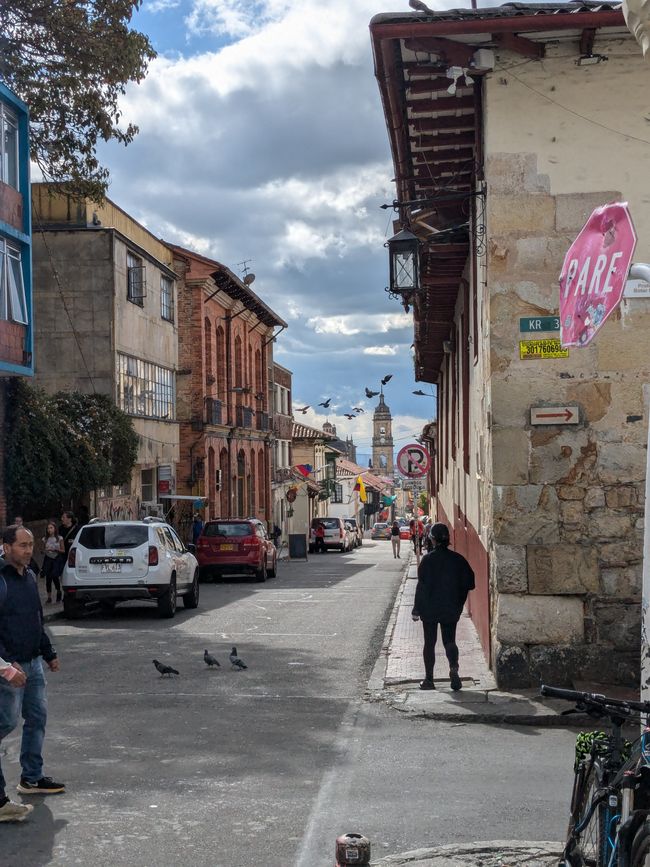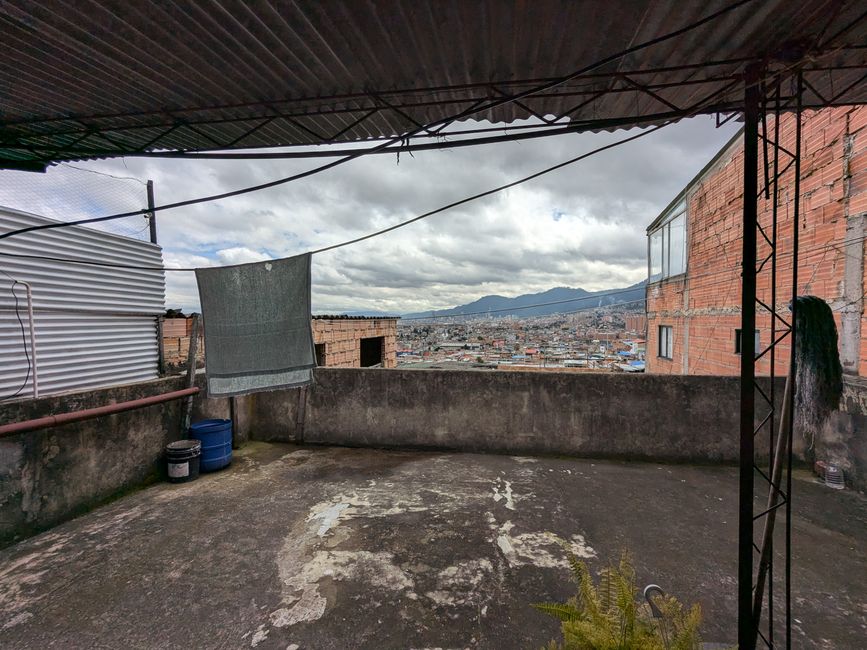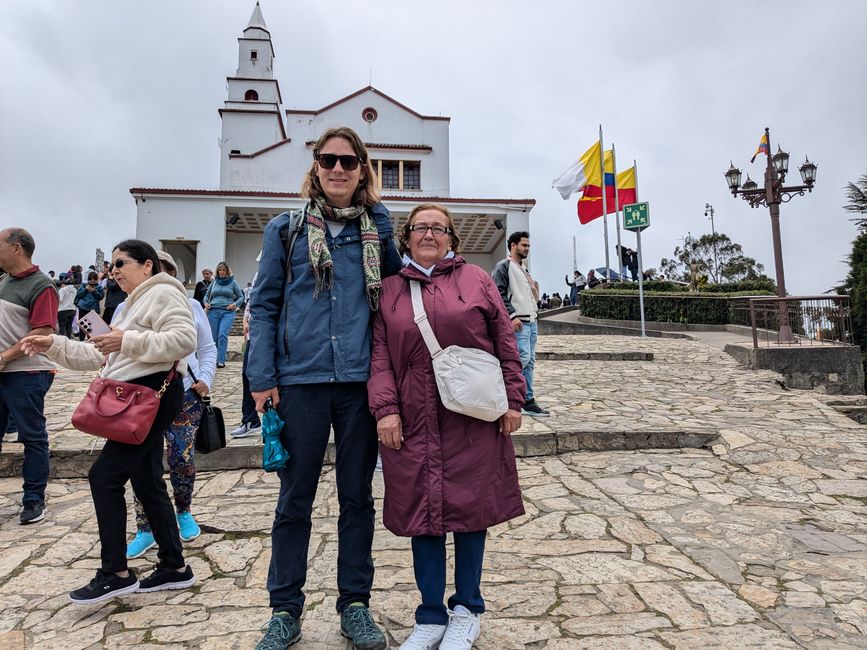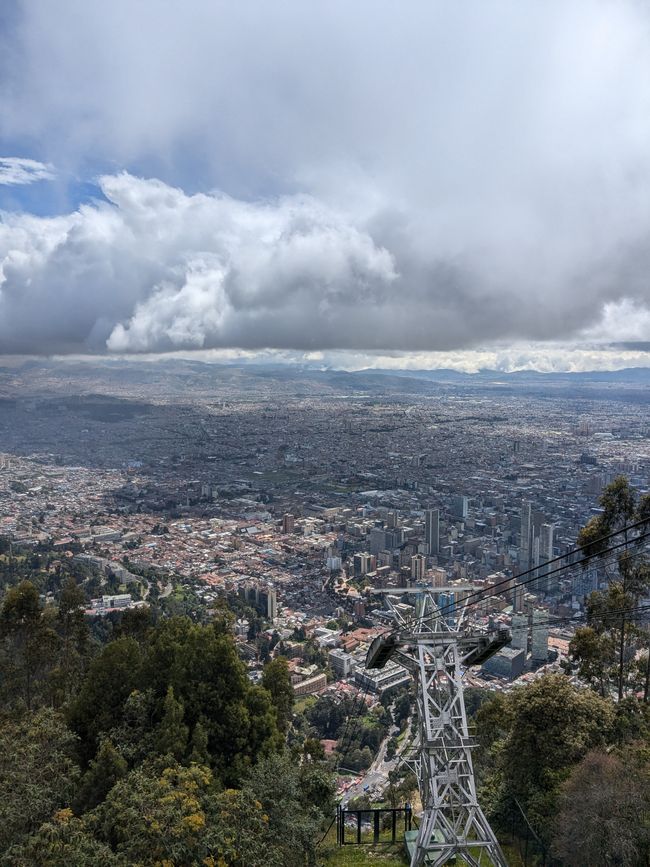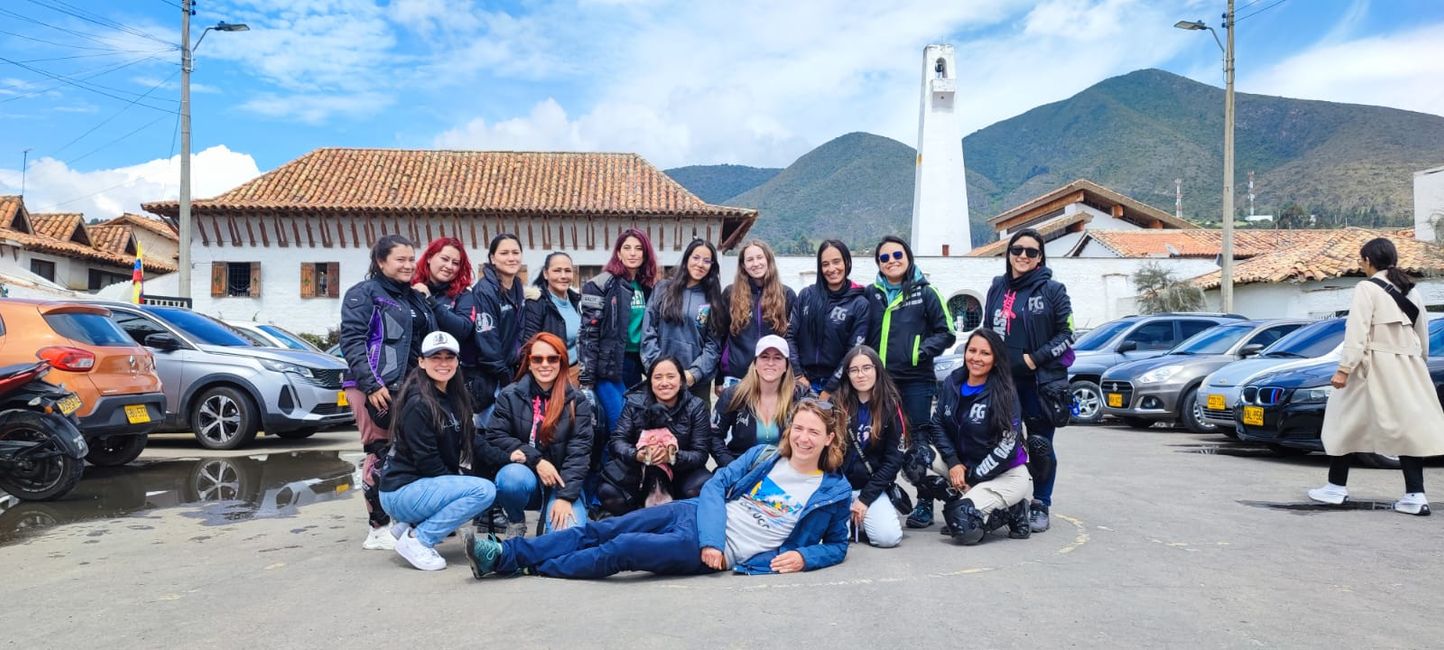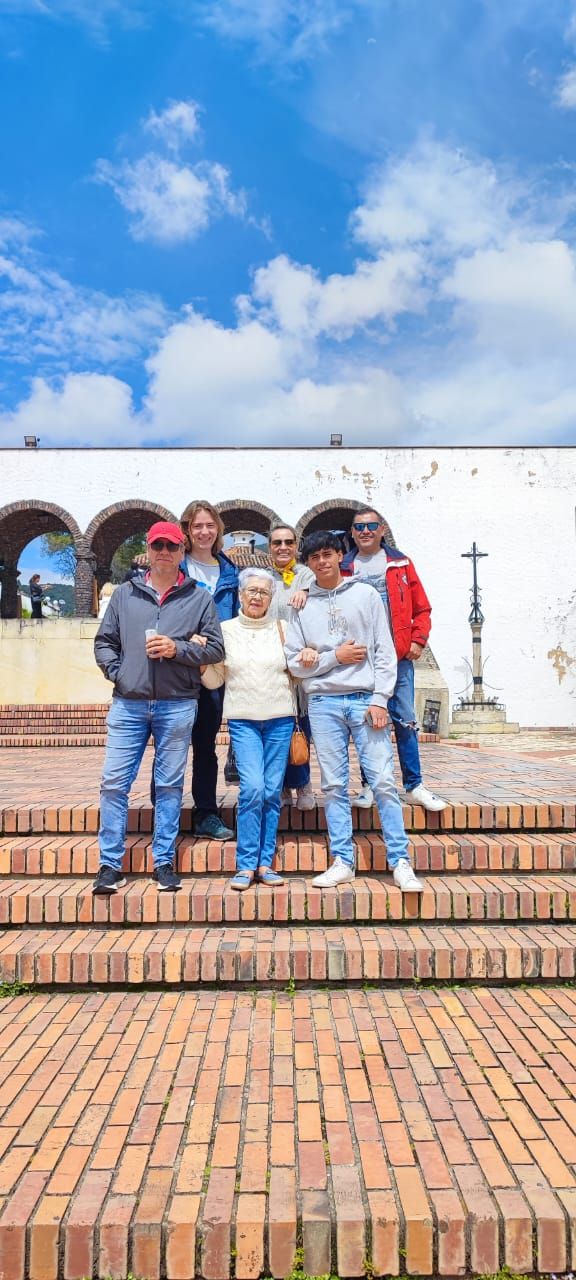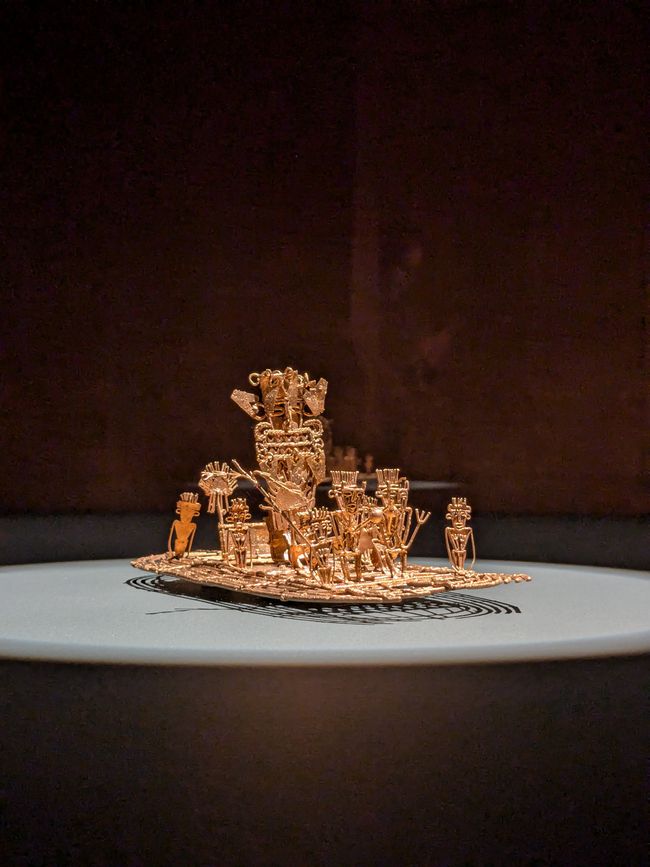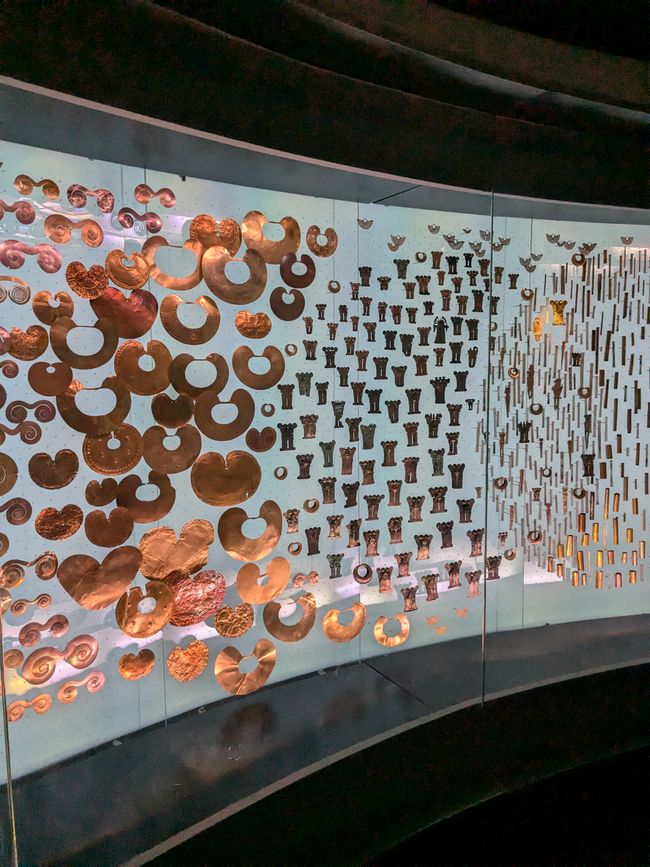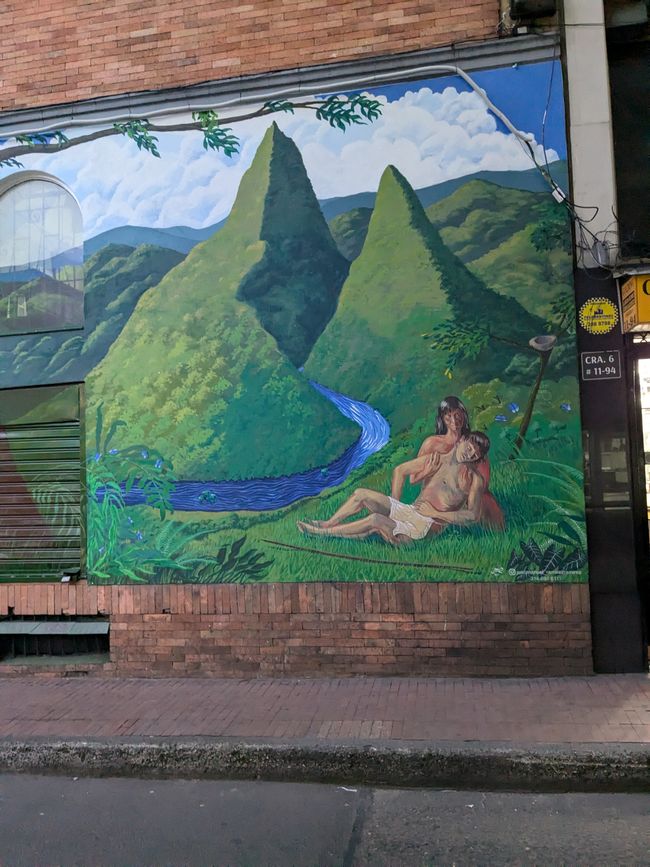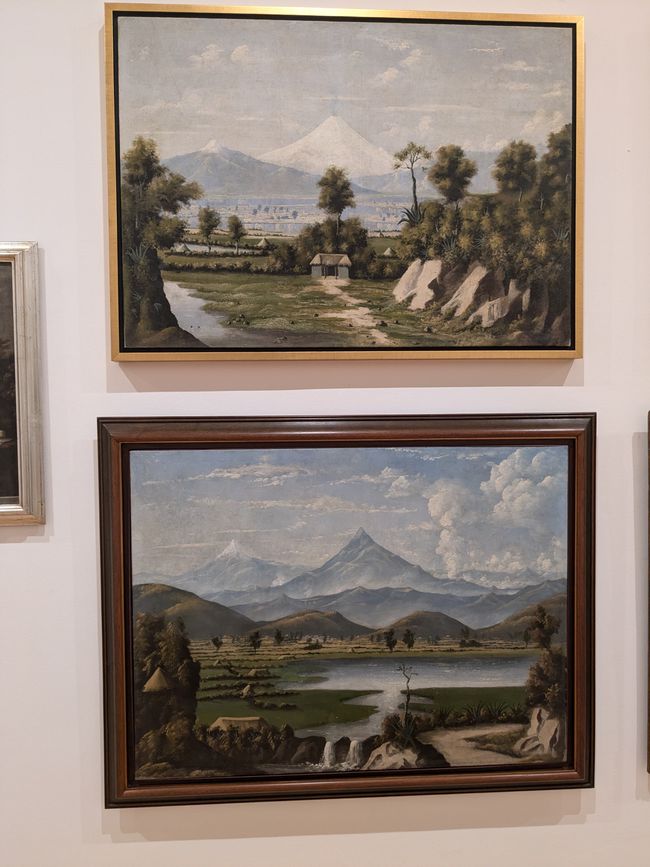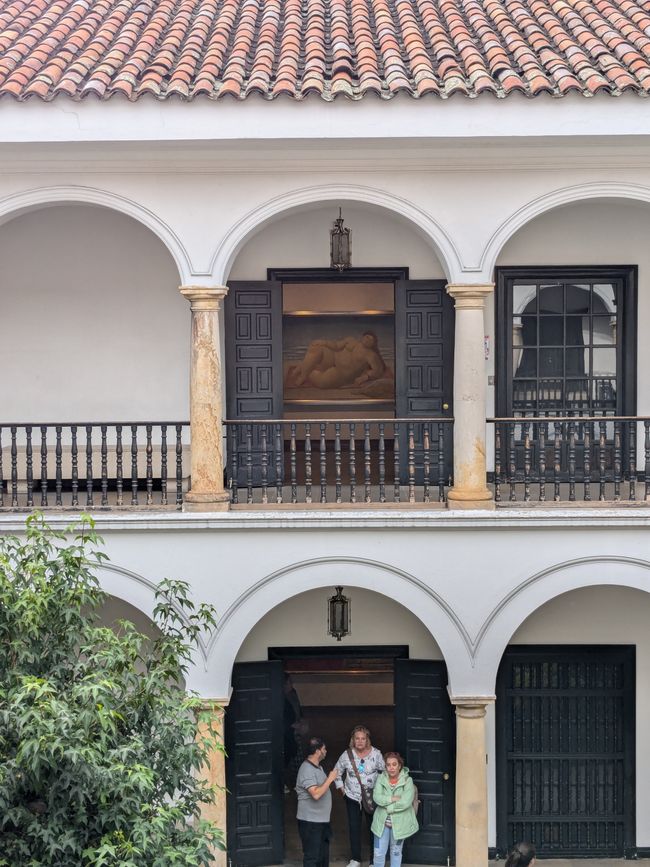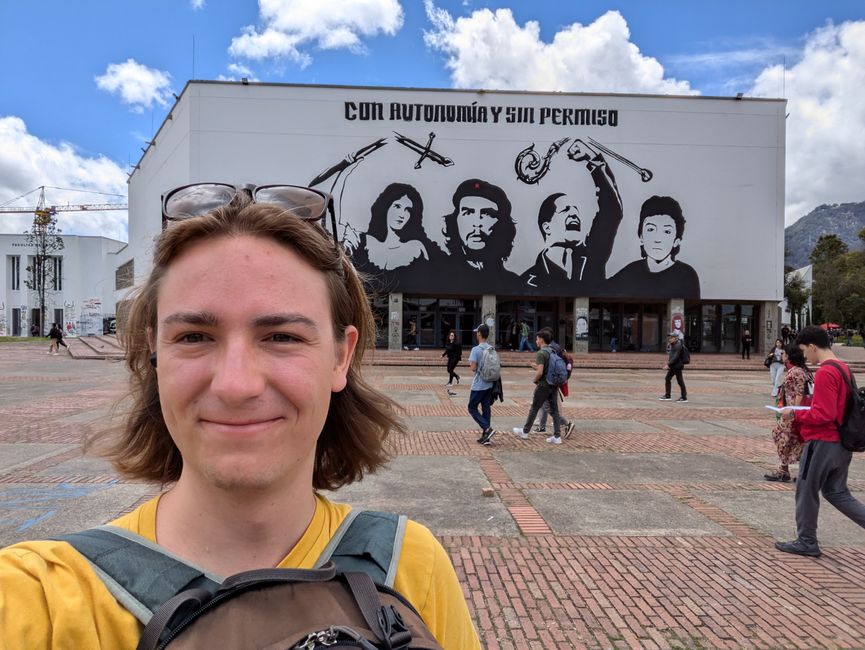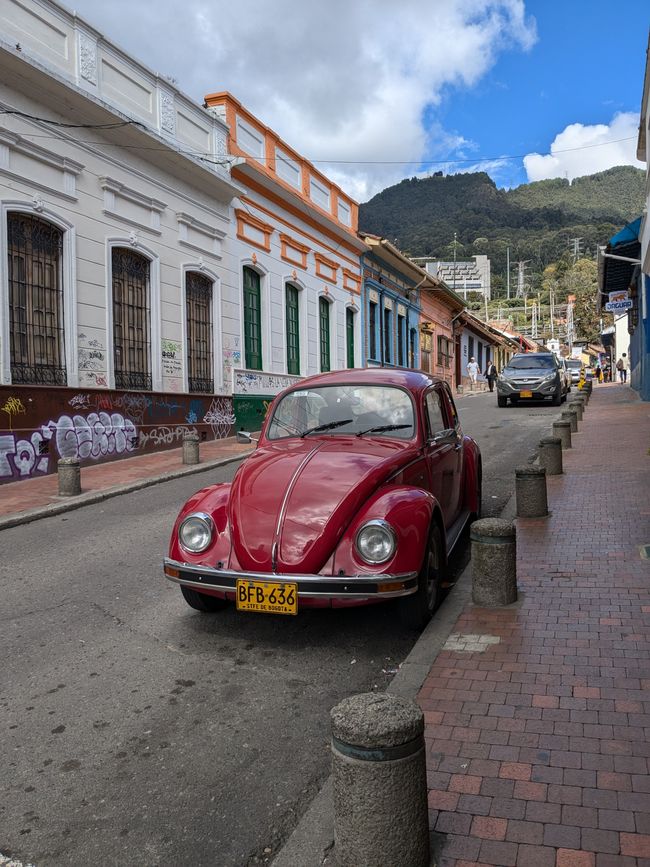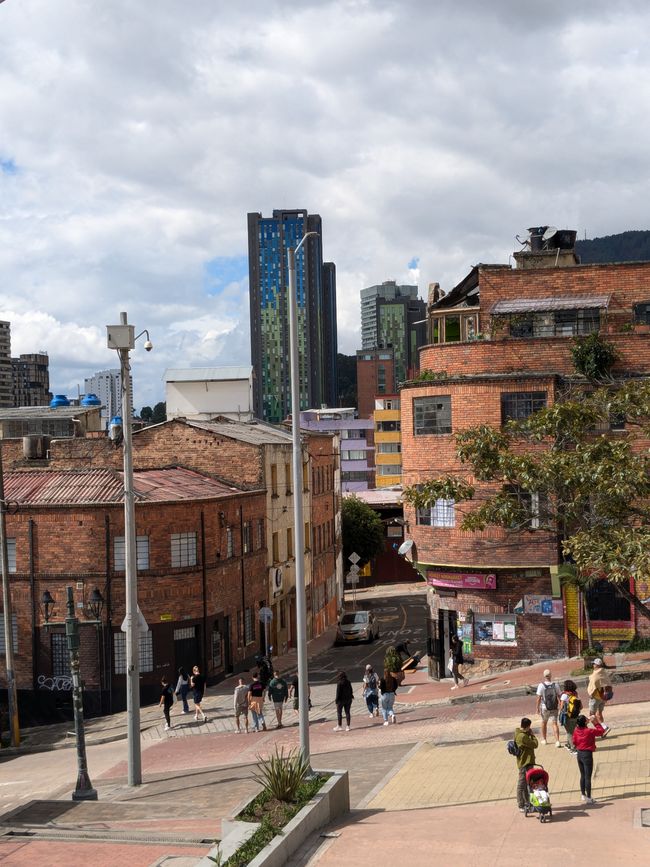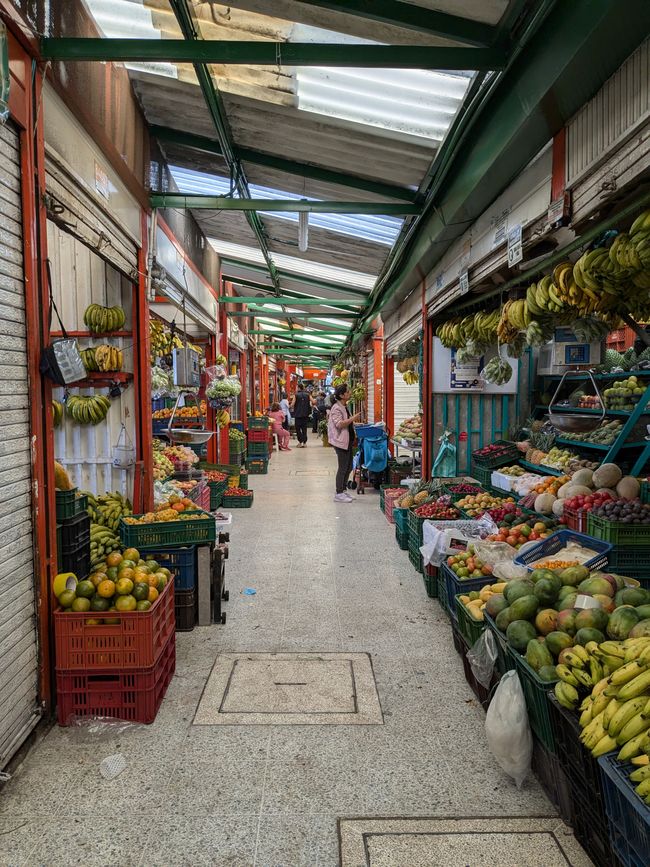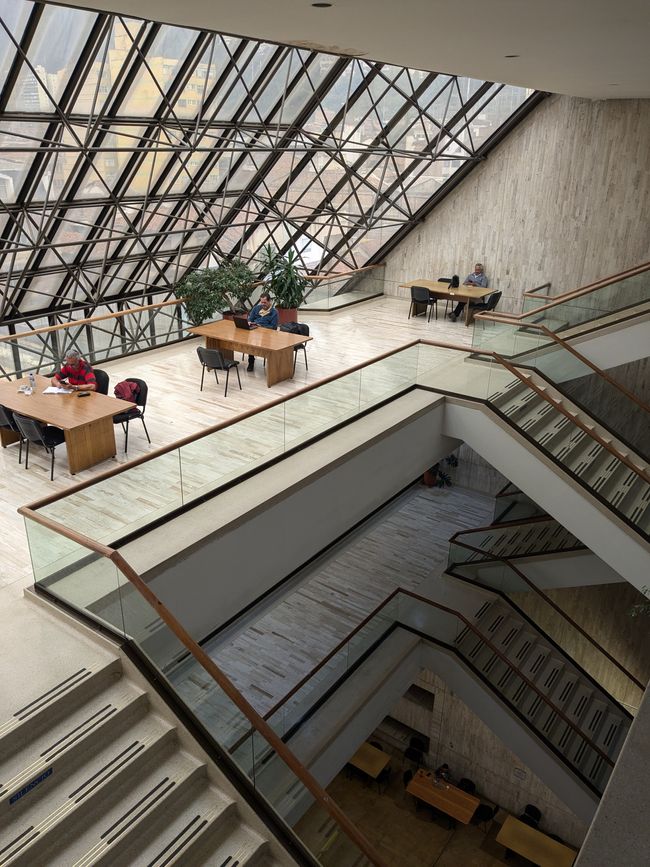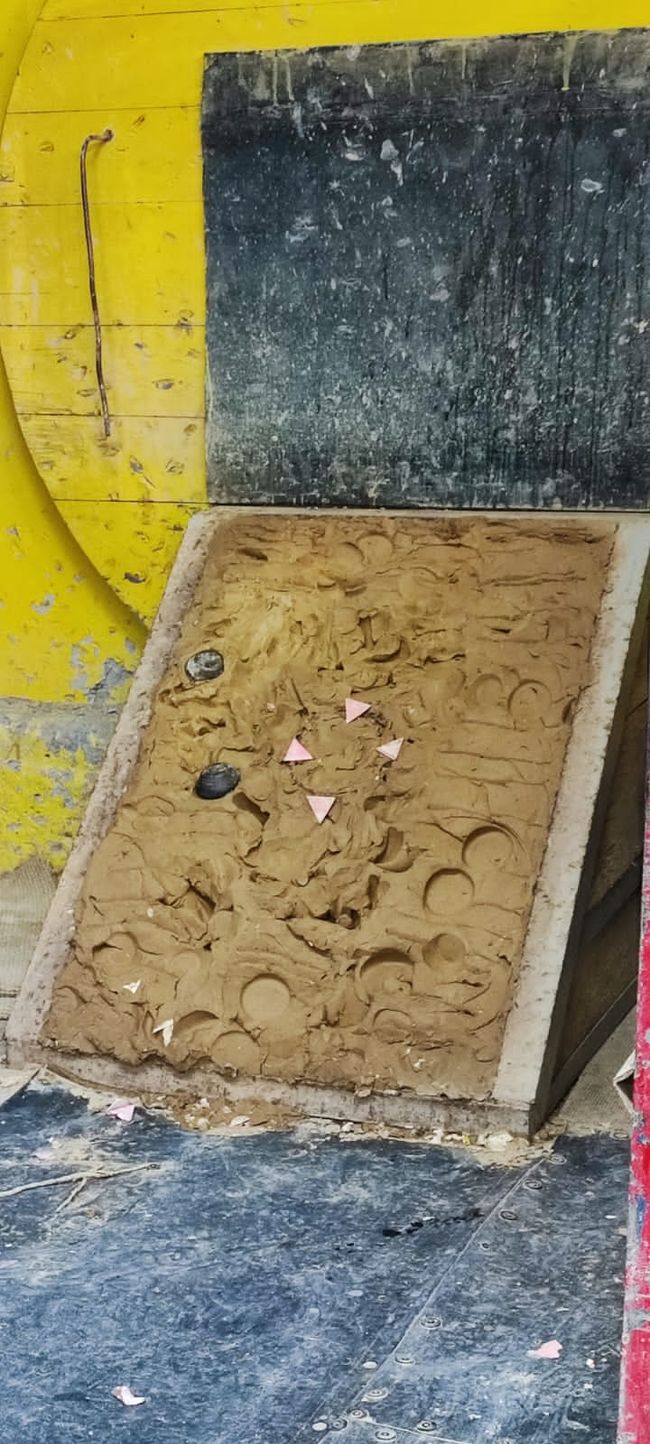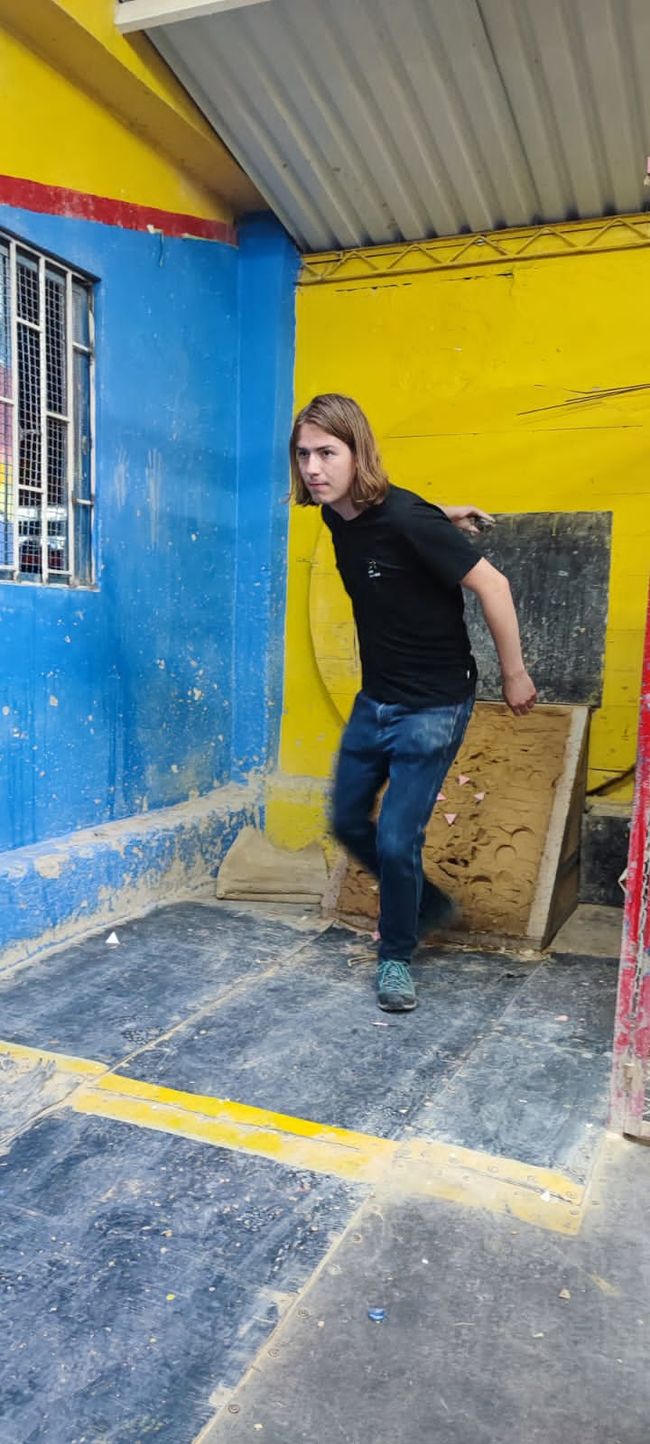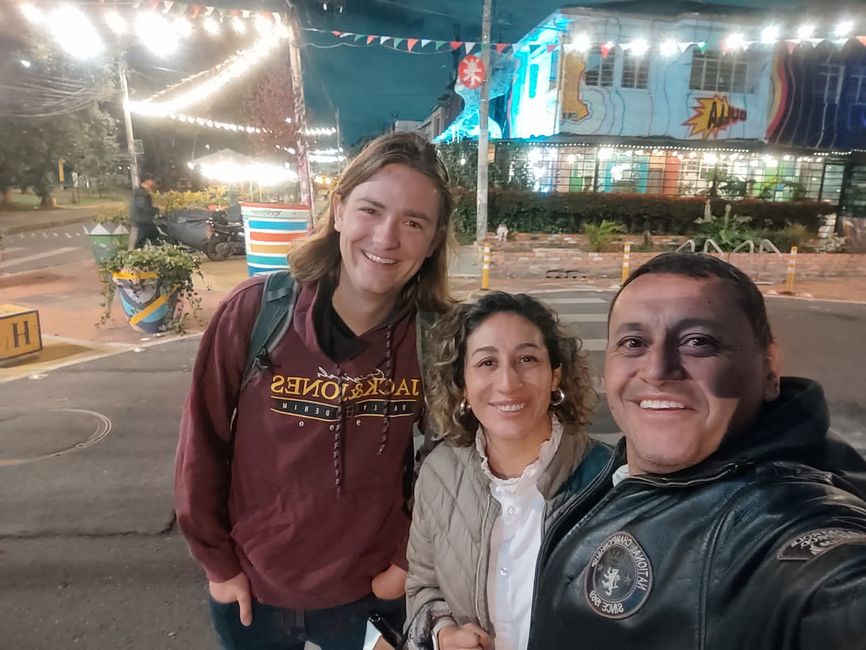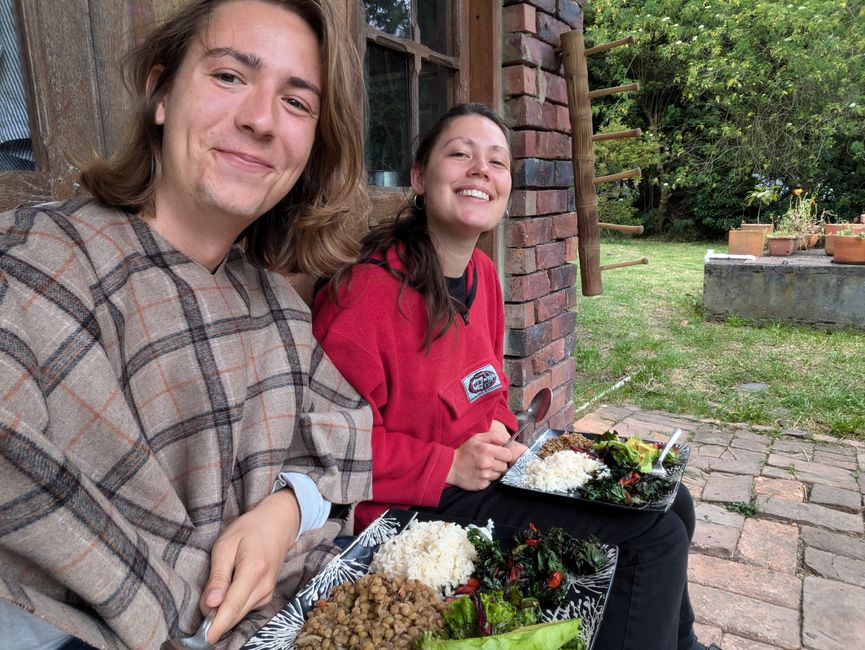Bogotá
Pibliye: 25.09.2024
Abònman nan bilten
Finally arrived in Bogotá, I had to notice one thing: This city is large, really large! But that didn't stop me from meeting Mimi and Sahira at a bar in the Parkway after accompanying Guardo to his work at the Unidad de las Víctimas. Both, like Sebás, studied for their Master’s in Conflict, Memory & Peace in Eichstätt and here in Bogotá at Universidad Rosario. We talked for about two hours about what we experienced last year in Eichstätt or in Colombia, and then we said goodbye. In the following days, I will catch up in a similar way with my other two friends from Eichstätt, Jean Paul and Alexandra. Since everyone is busy with new jobs and their master's thesis, apart from Ale, unfortunately, these brief meetings were all we could manage.
So I mostly explored Bogotá on my own, unless I was with Bryan's family. On the second day, I set off from the apartment on the outskirts towards Bogotá’s central district, La Candelaria, using the Transmilenio. This 'express bus' system (though it still takes me at least 1.5 hours for one trip) works a bit like a metro and is the backbone of public transport in this 10 million metropolis. On this first of many rides, I suddenly received a call from an unknown number, which turned out to be Bryan’s grandmother, Cecilia. She invited me for lunch today. I promised to arrive at her home at four in the afternoon and first took a walk through La Candelaria. There, I visited a maze-like bookstore recommended by Bryan, the central Plaza Simón Bolívar with Parliament, Cathedral, and Presidential Palace before I ventured south, despite all the common advice, by bus and on foot until I finally knocked on her door.
Cecilia opened up immediately and welcomed me with incredible warmth. She showed me the very modest house and offered me a cold can of Corona. We spent the rest of the day talking about everything under the sun. For dinner – we had Ajiaco, the typical dish of Bogotá – Bryan's grandfather came home after working as a street vendor, as he does every day. However, since he doesn't hear very well, it was somewhat challenging for us to communicate.
I spent the night in the room that used to belong to Guardo and later Bryan. The next day, Cecilia and I set off together to Monserrate, the pilgrimage site and viewpoint rising above Bogotá. After some waiting – which Cecilia managed to reduce significantly thanks to her charm with the staff – we took the cable car up. From the top, we enjoyed breathtaking views and took countless photos of this sprawling city.
The following day, Guardo and I went to visit his sister and her family in the upscale Macadamia neighborhood. From there, Bryan’s cousins drove us to Guatavita, a village that was relocated in the 1960s due to the construction of a reservoir. At the lake, we watched the many kites fly in the windy August weather, ideal for flying in the Andes. We also met a group of female motorcyclists who Guardo convinced to take a photo with me. The area around Guatavita is particularly famous for the legend of El Dorado. In pre-Columbian times, the rulers of the Muisca performed ceremonies in the lagoon of Guatavita to honor the sun god. They would sail a raft to the middle of the lake and throw gold and emeralds into the water as offerings. These rituals fueled the imagination and greed of European conquerors who spent centuries searching for the supposed treasures. A proof of this exists in a miniature version of the raft created by the Muisca, which I was able to admire at the Museo del Oro.
Other highlights of my stay included the vast campus of the Universidad Nacional, the Museo Botero, and the Biblioteca Luis Ángel Arango with its spectacular rooftop terrace. The next stage of my trip took me to the Caribbean for a week. But before I left Bogotá, I tried my luck with Olga and Guardo at Tejo. This game, most comparable to boules, has its origins in pre-Columbian times. You throw a metal disc at a clay box about six meters away, trying to hit a ring surrounded by small paper cones filled with gunpowder. If you manage to trigger an explosion, you score extra points – unless you, like me, miss entirely. But after a few bottles of good beer, that didn't really matter.
From Santa Marta (I hope to write about that soon), I returned to Bogotá, where Guardo set me up on a date. Surprisingly, it went quite well, but with me leaving the country two days later, the timing wasn't ideal. At Ale's invitation, I spent a very relaxed last day in Colombia at her new home, away from the hustle and bustle of the city. With ingredients from her own garden, we cooked together, and after a short walk, we sat down with a few beers at Cata’s shop.
Many thanks to everyone who welcomed me so incredibly well in Colombia, especially the Suárez and Valbuena families! I am very glad to have spent such a lovely time with you and hope to see you again soon!
English
Finally arriving in Bogotá, I had to admit one thing: This city is huge, really huge! But that didn’t stop me from meeting Mimi and Sahira at a bar in the Parkway after accompanying Guardo to his work at the Unidad de las Víctimas. Both of them, like Sebás, studied for their Master's in Conflict, Memory & Peace in Eichstätt and here in Bogotá at the Universidad Rosario. We spent a good two hours catching up on what we had experienced over the past year in Eichstätt and Colombia before saying our goodbyes. In the following days, I will be meeting up with my two other Eichstätt friends, Jean Paul and Alexandra, to catch up as well. Since everyone is currently busy with new jobs and finishing their theses, these quick catch-ups, apart from Ale, are unfortunately all we could manage.
So, I mostly explored Bogotá on my own, unless I was out with Bryan’s family. On my second day, I set out from the apartment on the outskirts to Bogotá’s central district, La Candelaria, using the Transmilenio. This 'express bus' system (though it still takes at least 1.5 hours for a one-way trip) works somewhat like a metro and is the backbone of public transport in this 10-million-strong metropolis. On this first of many rides, I received a sudden call from an unknown number, which turned out to be Bryan's grandmother, Cecilia. She kindly invited me over for lunch. I promised to arrive by 4 p.m., and first took a walk through La Candelaria. There, I visited a cozy, maze-like bookstore Bryan had recommended, and saw the central Plaza Simón Bolívar with its Parliament, Cathedral, and Presidential Palace, before setting out – against all common advice – by bus and foot towards the south, until I finally knocked on her door.
Cecilia opened immediately and greeted me with incredible warmth. She gave me a tour of the modest house and offered me a cold Corona. We spent the rest of the day chatting about everything under the sun. For dinner – we had Bogotá’s typical dish, Ajiaco – Bryan’s grandfather came home after working as a street vendor, as he does every day. However, since he is a bit hard of hearing, it was somewhat challenging to communicate.
I stayed the night in the room that had once belonged to Guardo and later to Bryan. The next day, Cecilia and I set off for Monserrate, the pilgrimage site and viewpoint towering above Bogotá. After some waiting – which Cecilia managed to cut short thanks to her charm with the staff – we took the cable car up. From the top, we enjoyed breathtaking views, drank some coffee with pastry we brought and took countless photos of this sprawling city.
The following day, I went with Guardo to visit his sister and her family in the upscale neighborhood of Macadamia. From there, Bryan's cousins drove us to Guatavita, a village that had to be relocated in the 1960s due to the construction of a reservoir. At the lake, we watched the many kites soaring in the windy August weather, ideal for flying in the Andes. We also met a group of female bikers, who Guardo convinced to take a photo with me. The area around Guatavita is particularly famous for the El Dorado legend. In pre-Columbian times, the rulers of the Muisca people held ceremonies in the Guatavita lagoon to honor the sun god. They would sail a raft to the center of the lake and throw gold and emeralds into the water as offerings. These rituals fired the imagination and greed of European conquerors, who spent centuries searching for the supposed treasures. A miniature version of the raft, created by the Muisca, can be seen at the Museo del Oro, which I had the chance to admire.
Other highlights of my stay included the vast campus of the Universidad Nacional, the Museo Botero, and the Biblioteca Luis Ángel Arango with its spectacular rooftop terrace. The next stage of my journey took me to the Caribbean for a week. But before I left Bogotá, I tried my luck with Olga and Guardo at Tejo. This game, most comparable to boules, has its origins in pre-Columbian times. You throw a metal disc at a six-meter-distant clay target, trying to hit a ring surrounded by small paper pouches filled with gunpowder. If an explosion is triggered, you score extra points – unless, like me, you miss entirely. However, after a few bottles of good beer, that didn't really matter.
After Santa Marta (I hope to write about that soon), I returned to Bogotá, where Guardo set me up on a date. Surprisingly, it went quite well, but with me leaving the country just two days later, the timing wasn’t ideal. On Ale’s invitation, I spent a very relaxed final day in Colombia at her new home, away from the bustle of the city. With ingredients from her own garden, we cooked a meal together, then took a short walk before having a few beers at Cata’s local store.
Many thanks to everyone who welcomed me so warmly in Colombia, especially the Suárez and Valbuena families! I am so grateful for the wonderful time I had with you all and look forward to seeing you again soon!
Español
Finalmente, al llegar a Bogotá, tuve que darme cuenta de algo: ¡Esta ciudad es grande, realmente grande! Pero eso no me impidió reunirme con Mimi y Sahira en un bar en el Parkway, después de haber acompañado a Guardo a su trabajo en la Unidad de las Víctimas. Ambas, al igual que Sebás, hicieron la maestría en Conflict, Memory & Peace en Eichstätt y aquí en Bogotá en la Universidad del Rosario. Charlamos durante unas dos horas sobre lo que habíamos vivido el año pasado en Eichstätt o en Colombia, y luego nos despedimos. En los próximos días, me pondré al día de manera similar con mis otros dos amigos de Eichstätt, Jean Paul y Alexandra. Como todos están ocupados con nuevos trabajos y la tesis, aparte de Ale, lamentablemente estos encuentros fueron breves.
Así que exploré Bogotá en su mayoría por mi cuenta, a menos que estuviera con la familia de Bryan. En el segundo día, desde el apartamento en las afueras, me dirigí al barrio central de Bogotá, La Candelaria, en el Transmilenio. Este sistema de 'bus rápido' (aunque aún me toma al menos 1.5 horas un trayecto) funciona un poco como un metro y es la columna vertebral del transporte público en esta metrópolis de 10 millones de habitantes. En este primer trayecto de muchos, recibí de repente una llamada de un número desconocido, que resultó ser la abuela de Bryan, Cecilia. Me invitó a almorzar ese día. Prometí llegar a su casa a las cuatro de la tarde, y antes di un paseo por La Candelaria. Allí visité una librería laberíntica que me recomendó Bryan, la Plaza Simón Bolívar con el Parlamento, la Catedral y el Palacio Presidencial, antes de aventurarme en el sur, a pesar de las recomendaciones habituales, en bus y a pie, hasta que finalmente toqué a su puerta.
Cecilia me abrió de inmediato y me recibió con una calidez increíble. Me mostró la casa muy modesta y me ofreció una lata fría de Corona. Pasamos el resto del día hablando de todo. Para la cena – que consistió en el típico Ajiaco de Bogotá – llegó el abuelo de Bryan, quien había trabajado, como todos los días, como vendedor ambulante. Sin embargo, como no oye muy bien, nos resultó un poco difícil comunicarnos.
Pasé la noche en la habitación que antes perteneció a Guardo y luego a Bryan. Al día siguiente, Cecilia y yo nos dirigimos juntas al Monserrate, el sitio de peregrinación y mirador que se alza sobre Bogotá. Después de una espera – que Cecilia logró reducir considerablemente con su encanto hacia el personal – tomamos el teleférico hasta la cima. Desde allí disfrutamos de unas vistas impresionantes y tomamos numerosas fotos de esta enorme ciudad.
Al día siguiente, Guardo y yo fuimos a visitar a su hermana y su familia en el elegante barrio de Macadamia. Desde allí, los primos de Bryan nos llevaron a Guatavita, un pueblo que fue reubicado en la década de 1960 debido a la construcción de un embalse. En el lago, observamos las muchas cometas que volaban en el ventoso agosto, ideal para volar en los Andes. También conocimos a un grupo de mujeres motociclistas que Guardo comvenciera para que se tomaran una foto conmigo. La zona de Guatavita es especialmente famosa por la leyenda de El Dorado. En tiempos precolombinos, los gobernantes muiscas realizaban ceremonias en la laguna de Guatavita en honor al dios del sol. Se subían a una balsa hacia el centro del lago y arrojaban oro y esmeraldas como ofrendas al agua. Estos rituales alimentaron la imaginación y la codicia de los conquistadores europeos, quienes durante siglos buscaron los supuestos tesoros. Como prueba de ello, existe una versión en miniatura de la balsa, creada por los muiscas, que pude admirar en el Museo del Oro.
Otros puntos destacados de mi estancia fueron el enorme campus de la Universidad Nacional, el Museo Botero y la Biblioteca Luis Ángel Arango con su espectacular terraza en la azotea. La siguiente etapa de mi viaje me llevó una semana al Caribe. Pero antes de dejar Bogotá, probé suerte con Olga y Guardo en el Tejo. Este juego, que se parece más al petanca, tiene su origen en tiempos precolombinos. Se lanza un disco de metal hacia una caja de arcilla a unos seis metros de distancia, intentando acertar en un anillo rodeado de pequeños conos de papel llenos de pólvora. Si logras que explote, obtienes puntos extra, a menos que, como yo, falles. Pero después de unas cuantas botellas de buena cerveza, eso no era tan importante.
Desde Santa Marta (espero poder escribir sobre eso pronto), volví a Bogotá, donde Guardo organizó una cita para mí. Sorprendentemente, no salió nada mal, aunque el hecho de que me fuera del país dos días después no fue lo ideal. Invitada por Ale, pasé mi último día en Colombia de manera muy relajada en su nueva casa, lejos del bullicio de la ciudad. Con ingredientes de su propio jardín, cocinamos juntas, y después de un pequeño paseo, nos sentamos a tomar unas cervezas en la tienda de Cata.
Muchas gracias a todos los que me recibieron tan increíblemente bien en Colombia, especialmente a las familias Suárez y Valbuena. Estoy muy contenta de haber pasado un tiempo tan bonito con ustedes y espero verlos pronto.
Abònman nan bilten
Repons
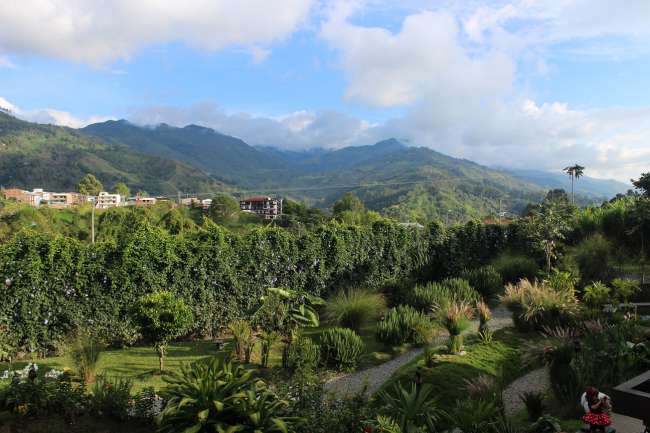
Rapò vwayaj Kolonbi


